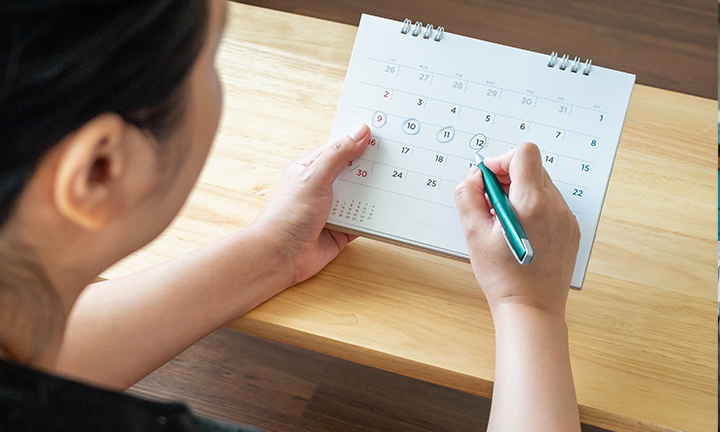
Postpartum Depression: Symptoms, Treatment, and Support
6 min readUpdated June 13, 2025
6 min readUpdated June 13, 2025
Postpartum depression is a serious, yet common, medical condition that affects up to 1 in 7 women after childbirth, sometimes even during pregnancy. Unlike the “baby blues,” which typically resolve within two weeks, postpartum depression persists longer. It presents more intense symptoms such as persistent sadness, anxiety, fatigue, and difficulty bonding with the baby. It can also affect adoptive parents and partners.
If left untreated, PPD may interfere with daily life and negatively affect both the parent and the child.
Key facts about postpartum depression:
Understanding postpartum depression is the first step toward feeling better. Whether you're here for yourself or someone you love, keep reading to learn what this condition can look like, what might cause it, and—most importantly—the many ways to get help. From recognizing symptoms to exploring postpartum depression treatment and support, this guide is here to walk you through it.
What is Postpartum Depression?
Postpartum depression (PPD) is a condition that can bring about strong, lasting feelings of sadness or worry in the months after giving birth. These emotions may sometimes feel overwhelming, making daily tasks like caring for yourself and your baby seem especially challenging.
You may be wondering, “When does postpartum depression start?” As the name suggests, PPD usually appears during the postpartum period—often between one and three weeks after your baby is born—but it may sometimes start later, even up to a year after delivery. For some, these feelings begin during pregnancy, sometimes called depression in pregnancy or perinatal depression, which includes both prenatal and postpartum experiences of depression.
Postpartum depression isn’t limited to a first delivery; it can occur after any birth. While feeling overwhelmed in those early months is normal, you’re adjusting to a new family member, likely losing sleep, and managing many new responsibilities. PPD involves deeper, more persistent feelings.
With postpartum depression, the feelings of sadness and emptiness linger, typically lasting longer than two weeks and impacting your ability to enjoy motherhood and bond with your baby. Importantly, PPD is not a sign of weakness or a character flaw but rather a complication of childbirth. Seeking help from a healthcare provider can make a real difference, helping you find the support you need.
Signs and Symptoms of Postpartum Depression
Recognizing the symptoms of postpartum depression may help you know when to seek support.
Postpartum anxiety symptoms may include intense worry or fear, even when situations may not be harmful, and panic attacks may sometimes accompany these feelings.
Only a healthcare provider may diagnose postpartum depression, so reach out if you’re experiencing symptoms.
Contact them immediately if:
Baby Blues vs Postpartum Depression
Postpartum depression is different from the postpartum blues, often called the baby blues. The term baby blues refers to common, less intense feelings of sadness or being overwhelmed after giving birth. With the baby blues, you may experience short periods of crying, anxiety, difficulty sleeping, or a reduced appetite, but these feelings generally don’t last long or require treatment. They often appear within a few days after birth and usually fade within a few weeks.
While the baby blues vs. PPD may feel similar, there’s a key difference: the baby blues typically don’t interfere with daily life, whereas PPD’s stronger, more persistent feelings may make caring for yourself and your baby feel difficult.
If you’re feeling down after giving birth, you’re far from alone—up to 70 to 80% of new parents experience baby blues as the body and mind adjust to the changes of having a newborn. During this time, having support from loved ones may make a difference.
Here are a few gentle ways to care for yourself during the baby blues:
What is Postpartum Psychosis?
Postpartum depression should not be confused with a rare mood disorder called postpartum psychosis, which is more severe and involves symptoms like hallucinations, delusions, and extreme agitation, making it a medical emergency that requires immediate attention.
Postpartum psychosis is estimated to affect about 4 in every 1,000 births, making it much less common than PPD. At first glance, postpartum depression and psychosis may seem similar, the symptoms of psychosis are typically more intense, posing potential risks for both the parent and baby if untreated.
What Causes Postpartum Depression?
What causes postpartum depression isn’t fully understood, but it’s thought to result from a combination of physical, hormonal, and emotional factors. Here are some elements that may help explain why postpartum depression occurs:
Postpartum Depression Risk Factors
While postpartum depression may affect any new parent, certain risk factors may increase its likelihood:
If you have a history of postpartum depression or any of these risk factors, it’s helpful to share this with your healthcare provider early on, even during pregnancy. They may take steps to monitor your mental health closely, offer a depression-screening questionnaire, or suggest counseling, support groups, or other therapies as part of your prenatal care.
How Common is Postpartum Depression?
You may be wondering, “How common is postpartum depression?” It’s more common than you might think.
According to the American College of Obstetricians and Gynecologists, postpartum depression affects 1 in 7 new parents, and 30% are at risk if the parent has had it before. This makes it one of the most frequent complications after pregnancy.
These statistics on postpartum depression highlight how vital it is to recognize the signs early and reach out for support. You’re not alone—and help is available.
How Long Does Postpartum Depression Last?
Postpartum depression may often require professional treatment. There’s no single answer on how long postpartum depression may last. Early intervention may help reduce the postpartum depression length of time and support recovery. If you’re feeling symptoms that aren’t improving after two weeks, it's worth reaching out for help.
In some cases, postpartum depression symptoms may peak a few weeks after birth but then persist for anywhere from 3 to 12 months or even longer without treatment. Seeking help early may lessen the severity of symptoms and may shorten the duration of the condition.
You may also wonder how long postpartum depression can last if left untreated. While some parents may recover gradually, others may experience ongoing symptoms for well over a year. Working closely with your healthcare provider may help reduce the impact of symptoms and support you in getting back to feeling like yourself.
Postpartum Depression Treatment
If you think you may have postpartum depression, reach out to your healthcare provider as soon as possible for an evaluation. Your healthcare provider will most likely perform a screening with questions to detect postpartum depression. Then they’ll be able to diagnose PPD based on your feelings and symptoms and work with you to create a treatment plan.
Postpartum depression treatment may involve one or both of the following:
How to Deal with Postpartum Depression?
While professional treatment is essential, these lifestyle practices may support recovery alongside your provider’s recommendations:
With the right care, postpartum depression may improve, allowing you to focus on bonding with your baby and finding joy in parenthood.
When to See Your Healthcare Provider
You should seek professional help forpostpartum depression if:
In an emergency, call 911. For immediate emotional support, contact the Suicide and Crisis Lifeline by dialing 988 or using their online chat. Help is free, confidential, and available 24/7.
How to Help Someone with Postpartum Depression?
Supporting a loved one through postpartum depression may make a meaningful difference. People experiencing PPD may not recognize their symptoms, so if you suspect someone you care about is struggling, you may be able to guide them to seek postpartum help by encouraging them to speak with a healthcare provider.
As a partner, friend, or family member, you can’t “fix” postpartum depression, but there are supportive actions you can take:
Your support may have a powerful impact in helping a loved one feel understood and supported through their journey with postpartum depression.
Can Men Get Postpartum Depression?
It’s normal to wonder, “Can men get postpartum depression?” The answer is yes. Male postpartum depression is a recognized condition that may impact up to 25% of new fathers in the first year after birth. Similarly, same-sex and non-biological parents may also experience symptoms of postpartum depression as they adjust to the demands of parenthood.
Coping with new responsibilities, bonding with your baby, and managing the pressures of providing for a growing family may all contribute to male PPD. Common symptoms include feelings of anger, irritability, sadness, withdrawal from loved ones, and a general sense of being overwhelmed.
Your emotional well-being as a parent plays a vital role in your little one’s development and the health of your entire family. It’s also important for your happiness and quality of life. If you’re experiencing postpartum depression, consult your healthcare provider and consider some of the self-care strategies mentioned above.
FAQS AT A GLANCE
It often stems from a combination of hormonal shifts after birth, emotional challenges, and physical exhaustion. Life changes, lack of sleep, or a personal or family history of depression may also increase your risk.
The Bottom Line
Postpartum depression is a real and challenging experience that can affect anyone after childbirth, but with the right care, recovery is possible. Whether you're working through PPD symptoms yourself or supporting someone else, remember you're not alone, and help is available.
Early intervention and ongoing care may make a positive difference, allowing you to focus on bonding with your little one and enjoying this new chapter. You deserve support, and reaching out to your healthcare provider is a strong first step.
For more guidance on adjusting to life as a new parent, check out this New Parents' Guide for helpful tips and resources.
As you navigate this time, consider using tools like the Pampers Rewards App to access digital offers on baby essentials. It’s a simple way to help with everyday costs and make the parenting journey a little smoother.
- ACOG: FAQs
- Cleveland Clinic: Depression After the Birth of a Child or Pregnancy Loss
- Cleveland Clinic: Yes, Postpartum Depression in Men Is Very Real
- Healthy Children: Depression and Anxiety During Pregnancy and After Birth: FAQs
- Healthy Children: Depression During & After Pregnancy: You Are Not Alone
- Kids Health: Postpartum Depression
- Mayo Clinic: Postpartum Depression
- March of Dimes.”Baby Blues after pregnancy.”
- March of Dimes: Postpartum Depression
- NIMH: Perinatal Depression
- OWH: Postpartum Depression
- Postpartum Progress: 4 Tips For Supporting A Mom With Postpartum Depression
Read more about Baby
Related Articles
Join a World of Support
through Pregnancy and Parenthood.
TRACK WITH TOOLS
LEARN WITH EXPERTS
GET REWARDED











